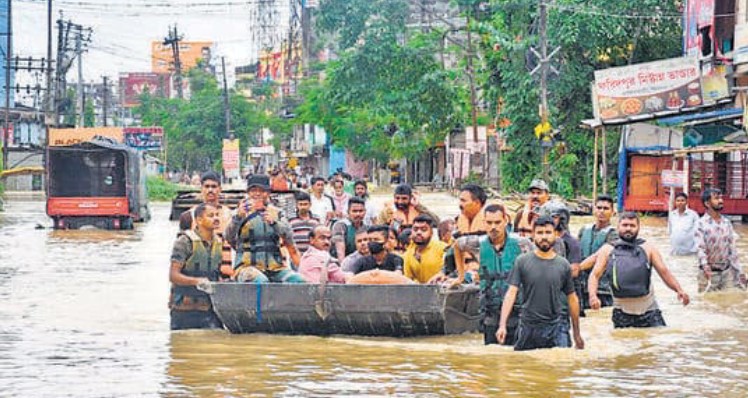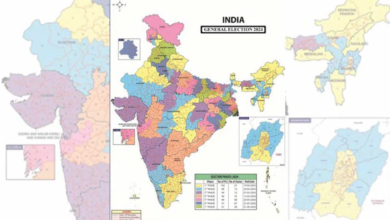Flooding eases in some parts of Assam but toll rises to 118

Flooding and water-logging in parts of Assam eased marginally with relatively lower precipitation across the affected areas of the state on Friday, but 10 fresh deaths, including those of 4 children, were reported as the region continued to deal with a massive humanitarian crisis.
According to a bulletin issued by Assam State Disaster Management Authority (ASDMA), over 3.3 million people in 28 of the state’s 35 districts still remained affected by floods, and more a total of 265,788 displaced people were taking shelter in 1,126 relief camps. The toll in the state due to heavy rainfall flooding since April has now risen to 118.
Random Video Chat with Gender Filter

Officials at the Guwahati office of India Meteorological Department (IMD) said that there will be light to moderate rainfall in all states in the North-East region over the next few days, and heavy rainfall in isolated places in Arunachal Pradesh, Nagaland, Manipur and Assam till June 28.
“However, this will be the regular rainfall witnessed in the region during monsoon and not like the heavy and surplus precipitation witnessed in the few days starting June 13,” said Sunit Das, senior scientist at IMD-Guwahati.
Assam’s second-biggest town, Silchar, remained waterlogged on Friday, leaving residents stranded for the fifth consecutive day. Some areas were so badly affected that were submerged under 5-8 feet of water even though there was no fresh rain in the city.
The flooding in Silchar reached unprecedented levels because a part of the Barak river’s embankment was damaged by locals in Bethukandi area on Sunday night, according to the officials of Cachar district administration. It led to the water entering parts of Silchar city on Monday, they added.
“Our main focus in the coming few days would be the three districts of Barak valley — Cachar, Karimganj and Hailakandi — in southern Assam. These districts are facing multifarious problems as many areas are waterlogged and there are transportation bottlenecks. Rescue and relief efforts will also continue as usual in the affected districts in lower and north Assam,” said GD Tripathi, CEO of Assam State Disaster Management Authority.
Journalist Sivashis Bhattacharjee, who lives in the Shyamananda Ashram Road area in Silchar, has been taking shelter on the rooftop of his house with his 15-month-old girl, ailing mother, and wife. On Friday morning, he swam more than kilometre to get food for his child.
“We didn’t get enough time to leave the area as water level increased all of a sudden. We are facing tough time and don’t when will the situation improve,” said the 38-year-old.
Eighteen-year-old Suman Das, from the Tapovan Nagar area of Silchar, has sent his family to a relief camp at Women’s College. The teenager has made a small boat from thermocol, and has been using it to ferrying stranded people in the Das Colony and College Road areas.
“I have to arrange food for my parents and sisters because they are not getting food in relief camp regularly. I am earning around ₹500 every day by ferrying people, but the prices of essential items have increased sharply in past few days,” he said.
Cachar deputy commissioner Keerthi Jalli said that rescue operations were on in entire flood-affected areas, and the state and national disaster resistance forces, Indian Air Force choppers, and NGOs, were distributing essential items.
According to IMD officials, the present spate of heavy rainfall, which affected most areas of northeast except Nagaland, started on June 13. For the seven days from June 16 to June 22–Meghalaya recorded 203% increase in rainfall than normal, Assam recorded 170% excess, Tripura 141%, Arunachal Pradesh 65%, Mizoram 64% and Manipur 20% excess. But Nagaland recorded 20% less rainfall.
In the first three weeks of this month, Meghalaya recorded 161% excess rainfall than normal, Assam 89% surplus, Arunachal Pradesh 32% and Tripura 14% more precipitation. The other three states-Nagaland, Manipur and Mizoram recorded less than normal rainfall during this period.







